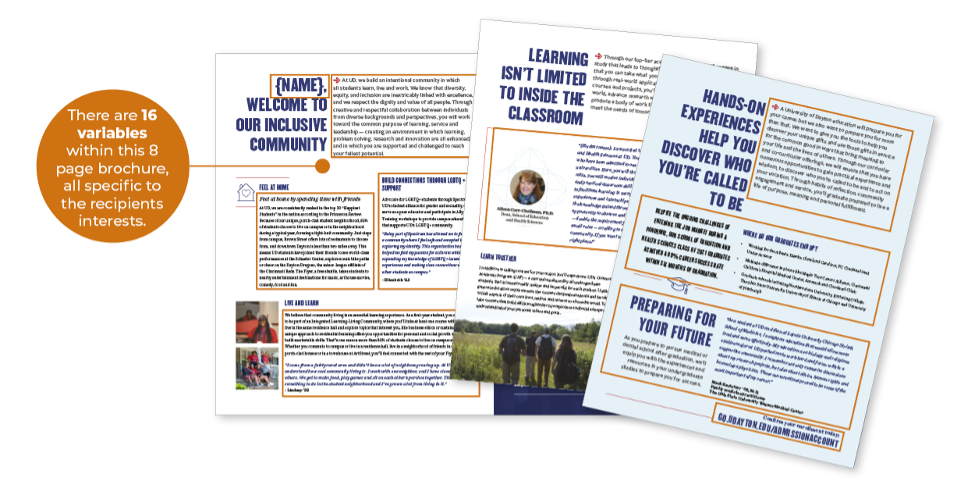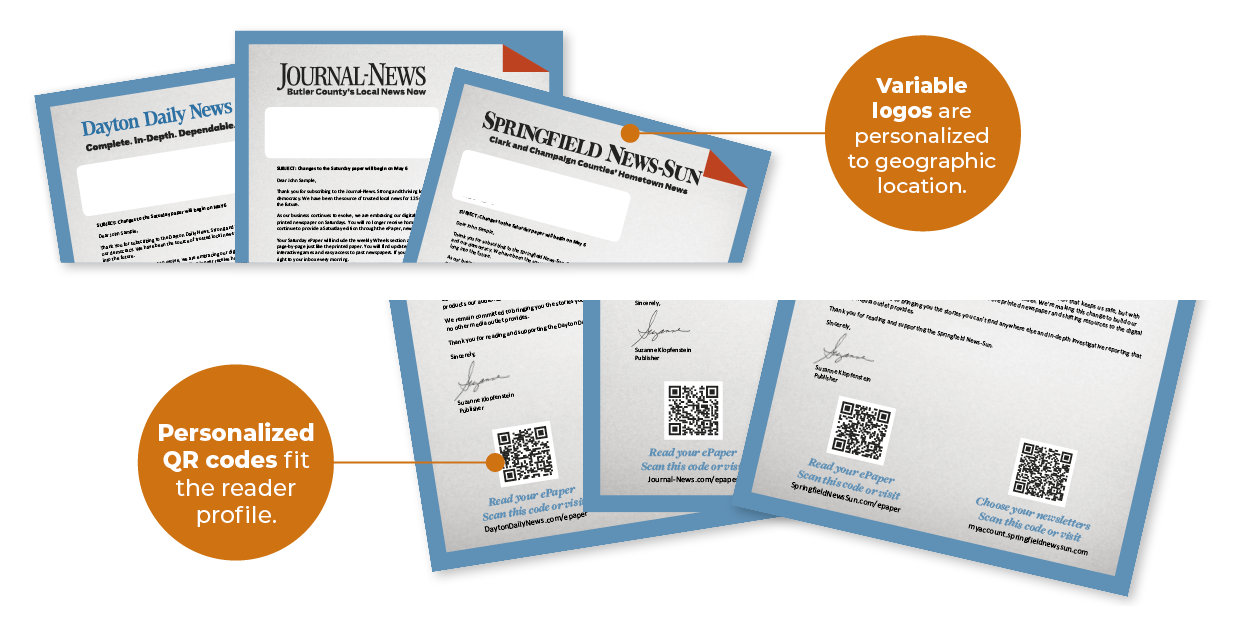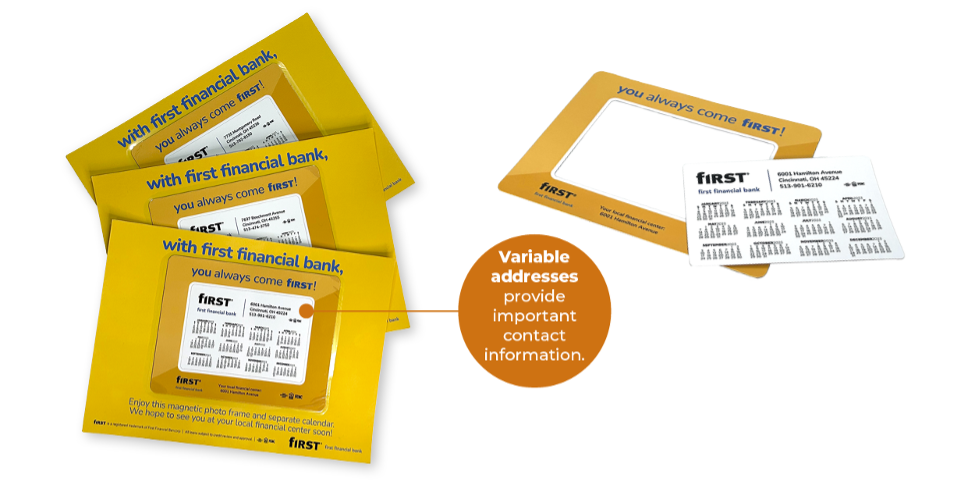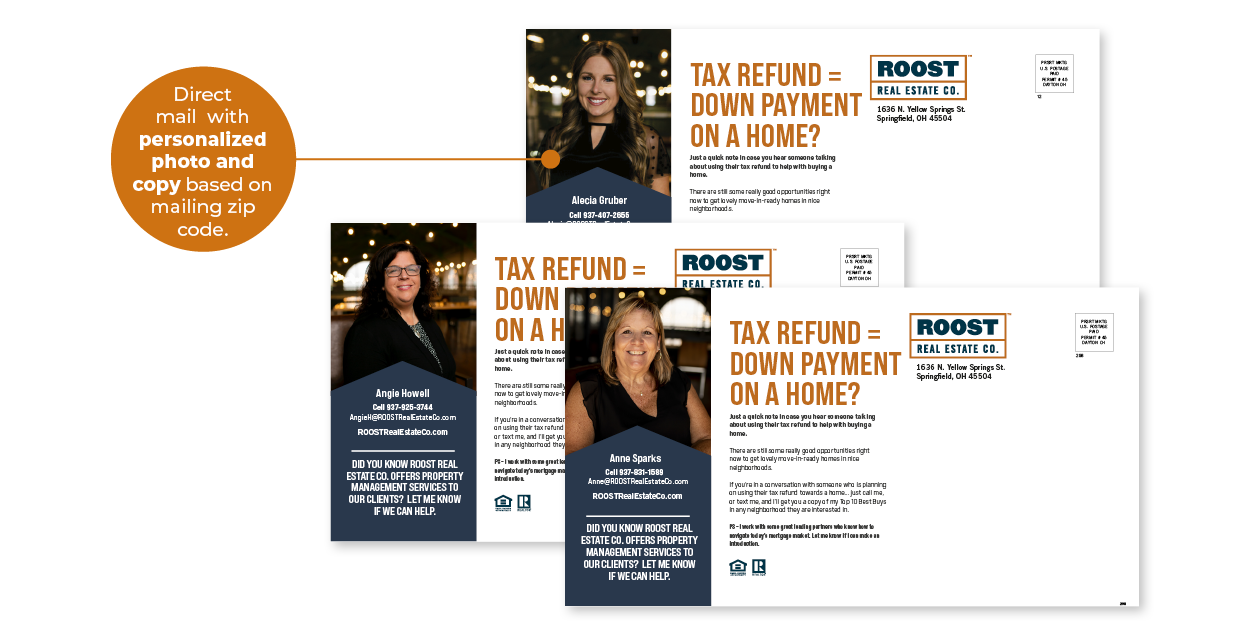The digital world is becoming increasingly crowded and noisy, so how are you supposed to stand out? Personalization! Customers want products that speak to them on a personal level. That’s why personalized marketing has become such a powerful tool for businesses.
With variable data printing, you can personalize your digital printing with ease. You can choose from different fonts, colors, messages, and even unique photos to create a truly personalized design that the customer can relate to and will set you apart from the competition. As consumers, we all appreciate efforts by brands to personalize messaging sent to us. It can be as simple as our name on a direct mail piece, yet we appreciate the effort.
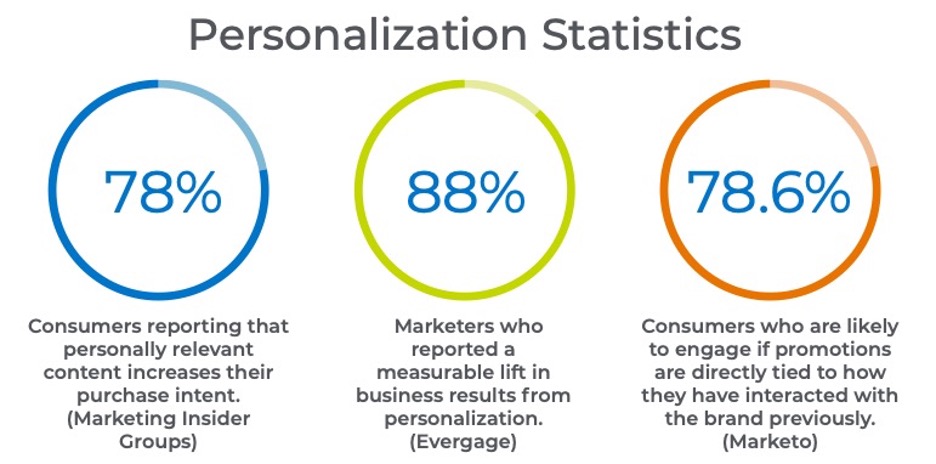
What is variable data printing?
Variable data printing is a process that allows for creating print materials with unique elements, such as personalized text messages, graphics, images, colors, fonts, etc. This technology can be used to create products such as:
- Postcards
- Letters
- Invitations
- Catalogs
- Brochures
- Booklets
- Labels
- Calendars
- And more
How does variable data printing work?
Variable data printing works by using various data fields to tell the printer what to print and where. These fields are defined by a variable data source and are supported by unique software.
There are many unique ideas for customized personalization such as:
- Brand Logo
- Custom Hashtag
- Favorite Color
- Interest or Hobby
- Pet Name
- Personalized QR codes
- Loyalty Tiers (based on customer engagement)
- Sports Team
Personalized designs are a great way to show off your brand or message in an exciting way that is sure to get attention from customers.
Personalization is the key to successful print marketing. Personalized marketing is all about creating relevant messages for specific customers based on their preferences, demographics, location, life events, and more. It’s not just about sending out generic emails with “Dear [name]” or “Hi [name].” Instead, it means designing unique content that speaks directly to people based on what you know that they like or dislike.
Examples of Personalization in Print
Demographic Targeting: When you personalize marketing materials by demographic information about your target audience, you can make sure that the message resonates with them. Use demographic targeting, like age, gender, or location, to reach certain groups of people who are more likely than others to respond favorably to your product or service.
Retargeting: Target your messaging based on website visitors who may have abandoned their shopping carts or not completed a contact form. Personalizing your marketing based on the customer’s interests has proven to help increase engagement.
Geo-Targeting: Location-based targeting allows you to target consumers based on their location, which can help boost sales at brick-and-mortar locations and improve foot traffic at physical stores. For example, if you own a restaurant that caters mostly to families with young children, then target parents who live within driving distance of where they eat out regularly as opposed to those who live farther away.
Event-based Targeting: Life event targeting allows marketers to send messages that resonate with people who are going through major life events such as buying a home or having a baby. Sending cards or notes on special dates like birthdays, or a thank you with a special offer after a purchase.
When you’re looking to improve your print marketing, personalization is the way to go. Personalized marketing improves customer engagement and increases brand loyalty. You can use personalized marketing in digital printing to target your audience based on their interests, demographics, and even location. The possibilities are endless!
Contact a Think Patented account executive at 937.353.2299 about creating amazing, personalized print marketing.

